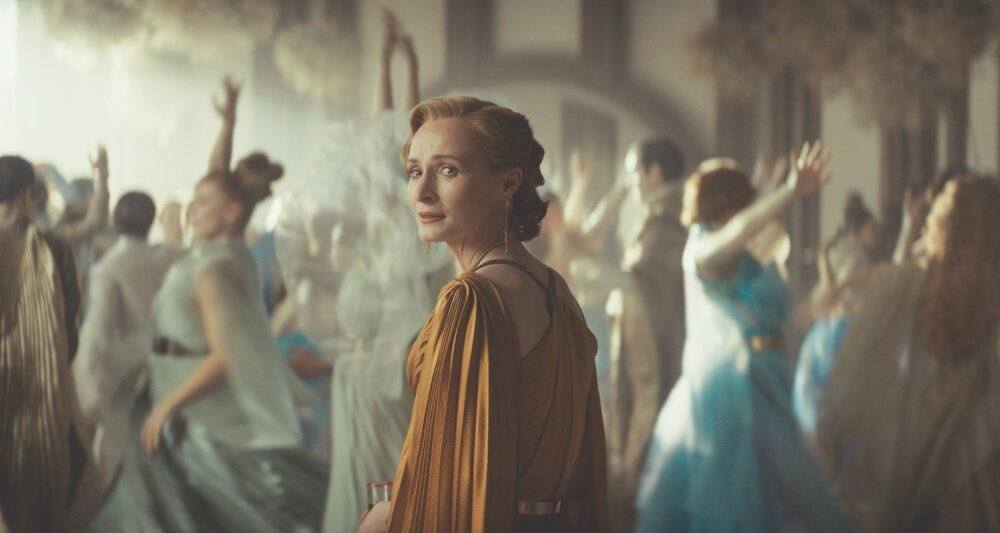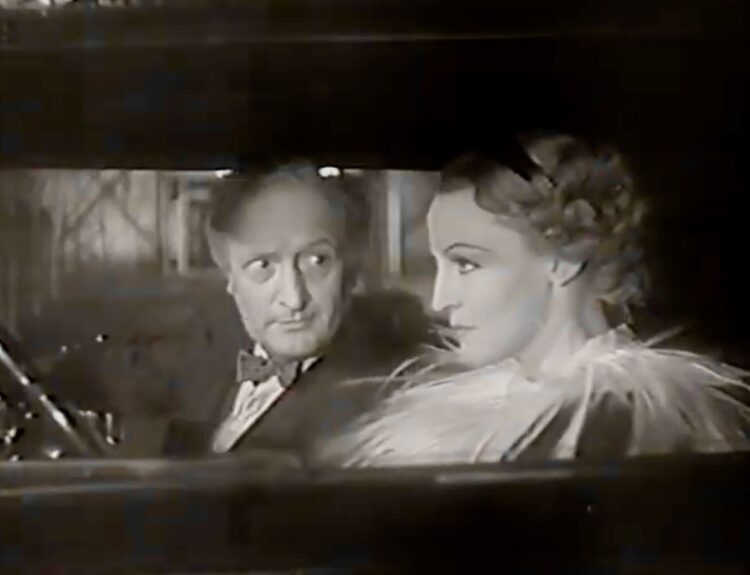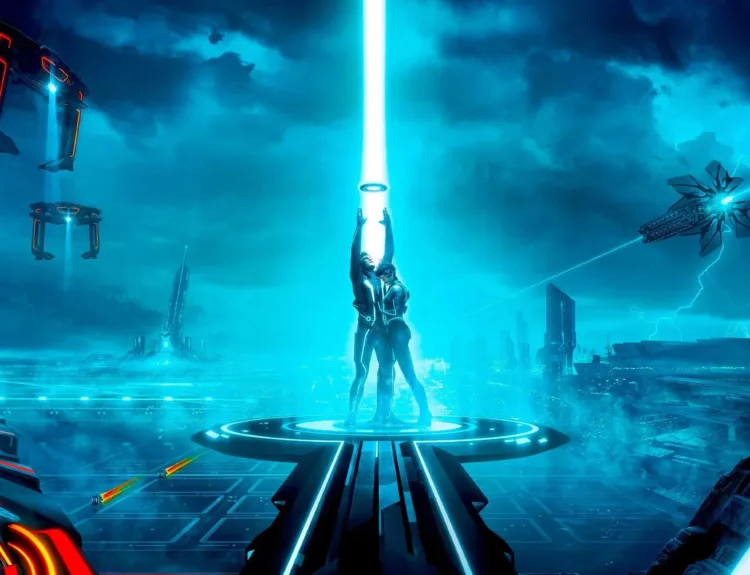One of the bits of streaming business that I was most looking forward to this year was the second season of Andor, or, as its often known in my circles, “the only good live action Star Wars show, and that includes The Mandalorian).
Not that I hate The Mandalorian, but I did find it overrated from the beginning, and definitely felt my interest declining sharply as it ran into its third season. The forthcoming live-action Mandalorian and Grogu movie is something I greet with resounding disinterest.
But that brings me back to Andor, because that’s how I also greeted the news of that show. Cassian Andor (Diego Luna) was high on my list of characters I wasn’t remotely interested in learning more about, and before the show aired I would joke about how it would be the story of the meeting of two great conjunctions that had never met before: and and or!

And Andor season 1 took a little bit to get going. It wasn’t immediately obvious why I should care about the show, the characters or the situation anyone was in. But as it continued, it started to become more and more impressive. It gave us a picture of the Star Wars universe that was grounded in a way that no other live-action show in the franchise was. The story of how the Rebellion got its legs was fascinating and dark, and the characters we were introduced to were compelling to watch.
Standing out amongst the crowd was Stellan Skarsgård’s Luthen Rael, a character who you would never want to know in real life but was fascinating to watch from the safety of our living rooms. This is a man of tremendous moral ambiguity–so utterly committed to ending galactic tyranny that he was willing to play any price, and also to force others to pay it as well. And unlike pretty much any other Star Wars TV or film project, Andor makes us feel what an absolute nightmare it is to live under the thumb of the Empire, so while a lot of what Luthen does is reprehensible, we can also feel why he and others feel it is necessary. This is a gripping set-up for a story and makes the journey of the show’s two seasons worth going on.

Some Spoilers Lie This Way
The first season of Andor took place five years “BBY”, (or “Before the Battle of Yavin” for the less nerdy amongst us who need such explanations) (or before the original Star Wars movie in 1977 for the even less nerdy amongst us), and show how Andor goes from being a smart guy just trying to survive to someone ready to sell himself for the cause, like he’s depicted in Rogue One.
In season two, the show picks up the pace by depicting the other four years. Twelve episodes are divided into four three-part arcs, each taking place in a successive year. Or sort of, anyway–at the end, the timing gets a little weird which threw me off. But mostly this is the idea.
There are several overlapping sets of core characters who we are watching over these four arcs, through whom we trace how the status quo is heading toward the events of Rogue One. The show gives us peaks into all sorts of arenas that help to shape things–inside Imperial strategy sessions, at the private celebrations of high-class citizens who secretly use their wealth and society connections to help fund the Rebellion, and on the ground of planets the Empire is actively oppressing.

Linking it together from a story perspective is the Empire’s particular efforts to secretly provoke Rebellion on a particular world, Ghorman, so they can more actively seize control of a natural resource that they need for a special project (the weaponry of the Death Star, we will eventually confirm).
Not every part of the series is as successful as the rest. The middle episode of the first arc in particular suffers from some ridiculous pacing issues, as Andor himself spends almost the entire episode having been captured by a disorganised band of rebels who are doing more more harm than good. It does highlight how the rebellion needs someone like Luthen to pull it together, but with all the other characters are off in their own more interesting storylines, it makes the screentime given to Andor feel really excessive–it’s as if it’s only there because his name is on the tin.
And then there are other pacing oddities in the last arc. The middle episode (again) features the looooong build up to a fight as Andor attempts to rescue one of Luthen’s colleagues who has the critical information about the Empire’s new superweapon that we all know the Rebellion desperately needs. The stakes are high and the drama is real, but the build-up to the actual fight is needlessly drawn out. This has the spill-on effect of making the last episode of the arc, and the last episode of the whole show, feel strangely rushed. The finale takes the unfortunate approach of assuming that the audience are remember Rogue One well enough to realize that a forthcoming mission that they talk about a fair bit is the one we saw in that movie, when in reality even I, a reasonably sized Star Wars-nerd, had no memory of that at all. The result is that the show ends on a montage that amounts to an extremely long fade-out which is supposed to be extremely meaningful, but just had me slightly confused.
What’s going on? Is this heading right into Rogue One? I thought this was a whole year before the Battle of Yavin. Rogue One doesn’t place over a whole year, does it? I was thinking things like that.

But all these complaints are nothing compared to the show’s strengths. Both of the middle arcs are excellent, and the third one is particularly gripping. All the set-up for what the Empire is pushing for on Ghorman comes to a head, with many of the show’s heroes and villains winding up in the thick of it. It’s a testament to the character work that when one of the villains, the naive true-believer in the Empire Syril Karn (Kyle Soller), is killed, it really feels like a loss for the show.
And that’s all in the middle episode of the arc! The following instalment has Mon Mothma (Genevieve O’Reilly), an Imperial Senator who is secretly helping the Rebellion, denouncing Emperor Palpatine from the Senate floor, and then details Andor’s efforts to help make sure she escapes. We know from Rogue One that both of these characters have to survive this ordeal, but actually watching is incredibly gripping. Now that is good drama.
In addition to Luthen, Syril and Mothma, the other most memorable character is Dedra Meero, a young and brilliant Imperial officer who plays a major role in the Ghorman operation. She is played by Denise Gough, who makes her immensely interesting. Like Syril (who she is paired with more ways than one), she is undoubtedly a villain, but is depicted in a way that we pity her as much as we want her to be defeated. Her final fate is genuinely sad, a dramatic feat that is achieved without minimising how terrible are the things she has been part of.

The cast of Andor also includes Varada Sethu, who recently impressed as Belinda Chandra in Doctor Who, and Anton Lesser who I know well from his role as Chief Superintendent Bright from Endeavour. Alan Tudyk appears toward the end of the series as his Rogue One character K2SO, which adds a degree of snarky fun to what has mostly been pretty heavy proceedings.
Even with its flaws, Andor remains the best live-action Star Wars show that Disney+ has managed to churn out, feeling less like “streaming content” than it does like legitimately good, gritty science fiction drama.
Movie News
Berita Olahraga
News
Berita Terkini
Berita Terbaru
Berita Teknologi
Seputar Teknologi
Drama Korea
Resep Masakan
Pendidikan
Berita Terbaru
Berita Terbaru
Berita Terbaru



